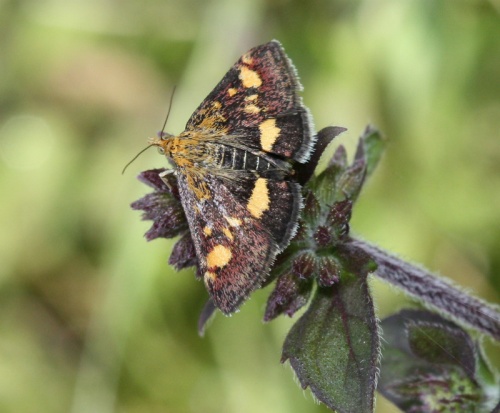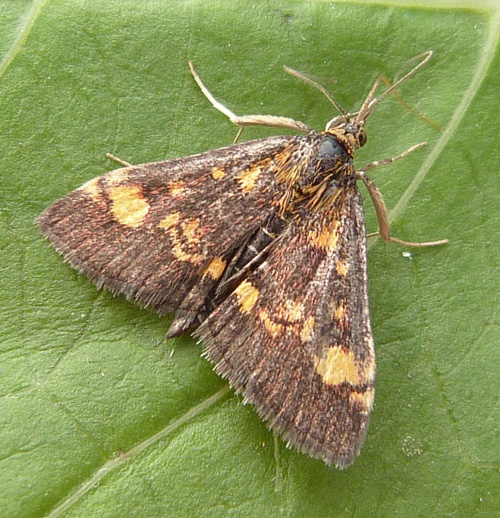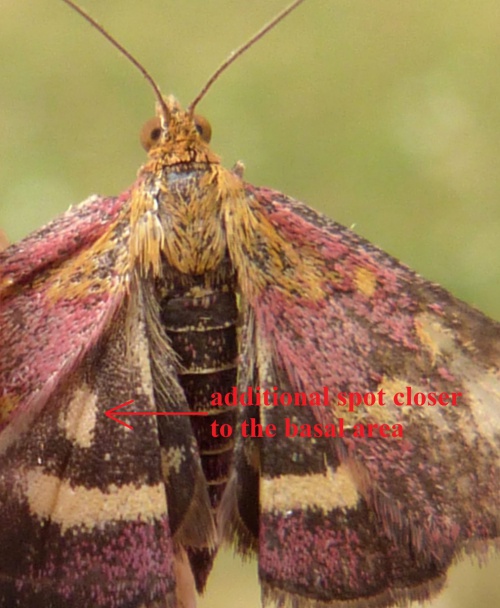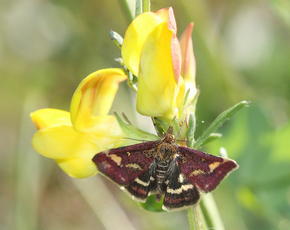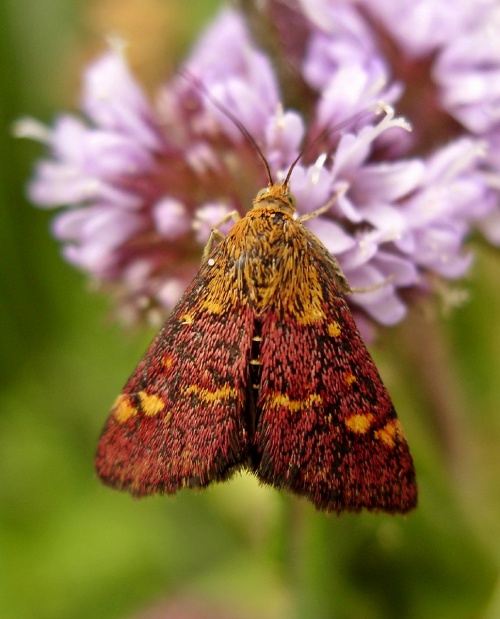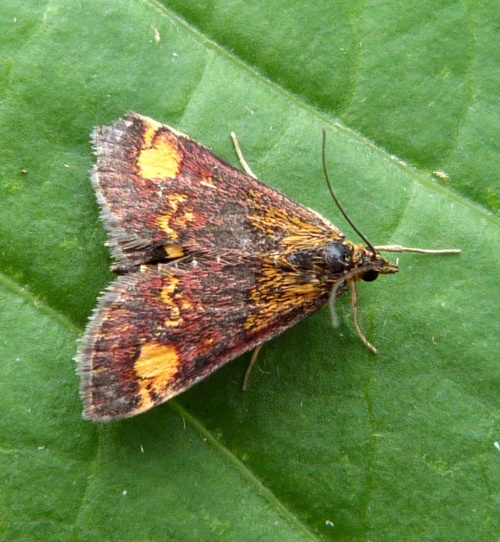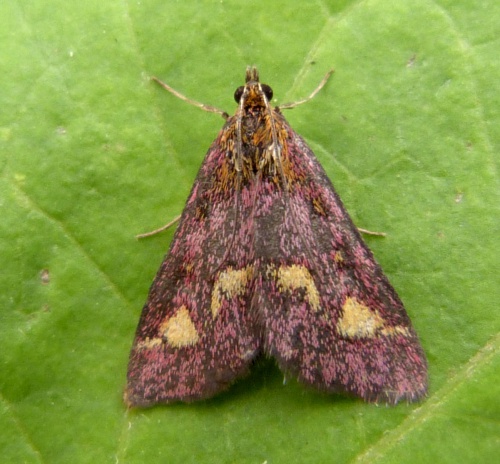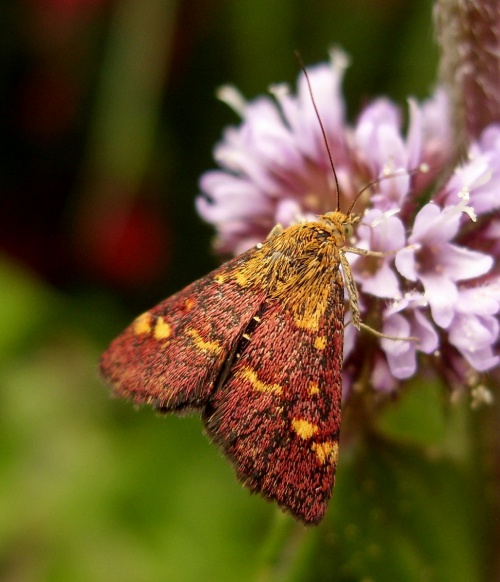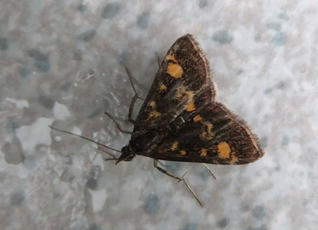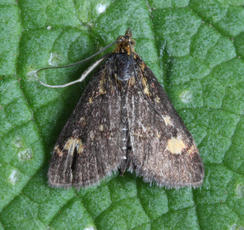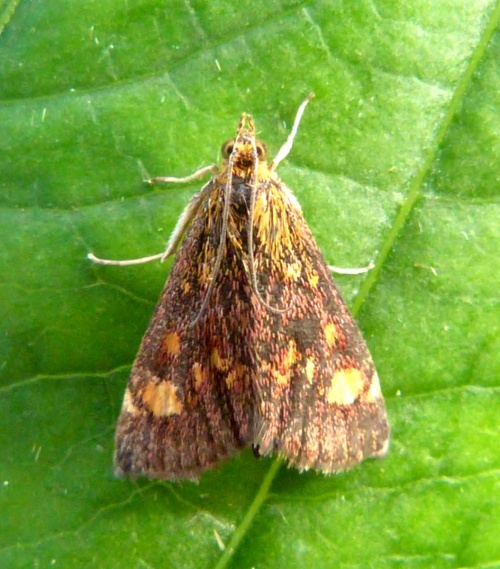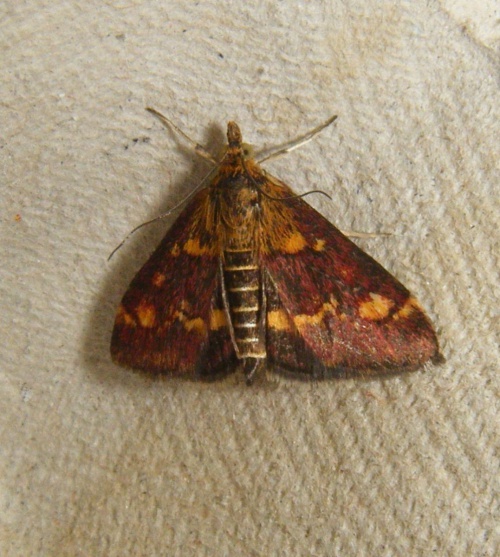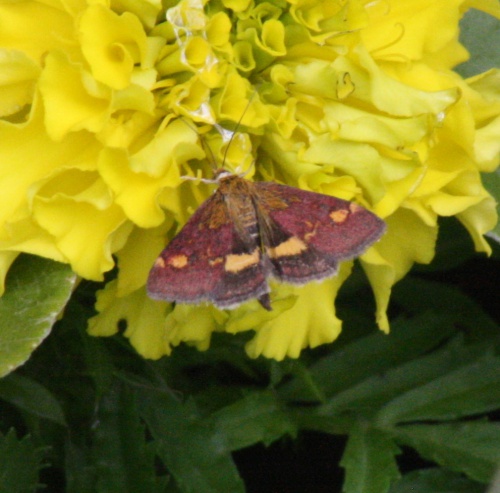Pyrausta purpuralis
Wingspan around 20 mm. In this species the postmedian markings can form a continuous broad band but it is usually broken into three substantial marks. The mark near the dorsum is always much more substantial than that, if any, on P. aurata and turns towards the base of the wing as it approaches the dorsal edge. The best identification feature is on the hindwing. This species has an additional yellow spot closer to the basal area.
Preferring dry grassland and chalky downland habitats.
The moth is double-brooded, flying from May to June and July to August. Flies both during the day and at night.
The larvae feed on Corn Mint and Thyme.
Distributed fairly frequently throughout much of Britain. In the Butterfly Conservation’s Microlepidoptera Report 2011 this species was classified as common.
Fairly frequent in Leicestershire & Rutland. L&R Moth Group status = B (scarce resident or restricted distribution or regular migrant)
Leicestershire & Rutland Map
Enter a town or village to see local records
MAP KEY:
Yellow squares = NBN records (all known data)
Coloured circles = NatureSpot records: 2025+ | 2020-2024 | pre-2020
UK Map
Species profile
- Common names
- Common Purple & Gold
- Species group:
- Moths
- Kingdom:
- Animalia
- Order:
- Lepidoptera
- Family:
- Crambidae
- Records on NatureSpot:
- 144
- First record:
- 01/06/2007 (Nicholls, David)
- Last record:
- 14/08/2025 (Pugh, Dylan)
Total records by month
% of records within its species group
10km squares with records
The latest images and records displayed below include those awaiting verification checks so we cannot guarantee that every identification is correct. Once accepted, the record displays a green tick.
In the Latest Records section, click on the header to sort A-Z, and again to sort Z-A. Use the header boxes to filter the list.


